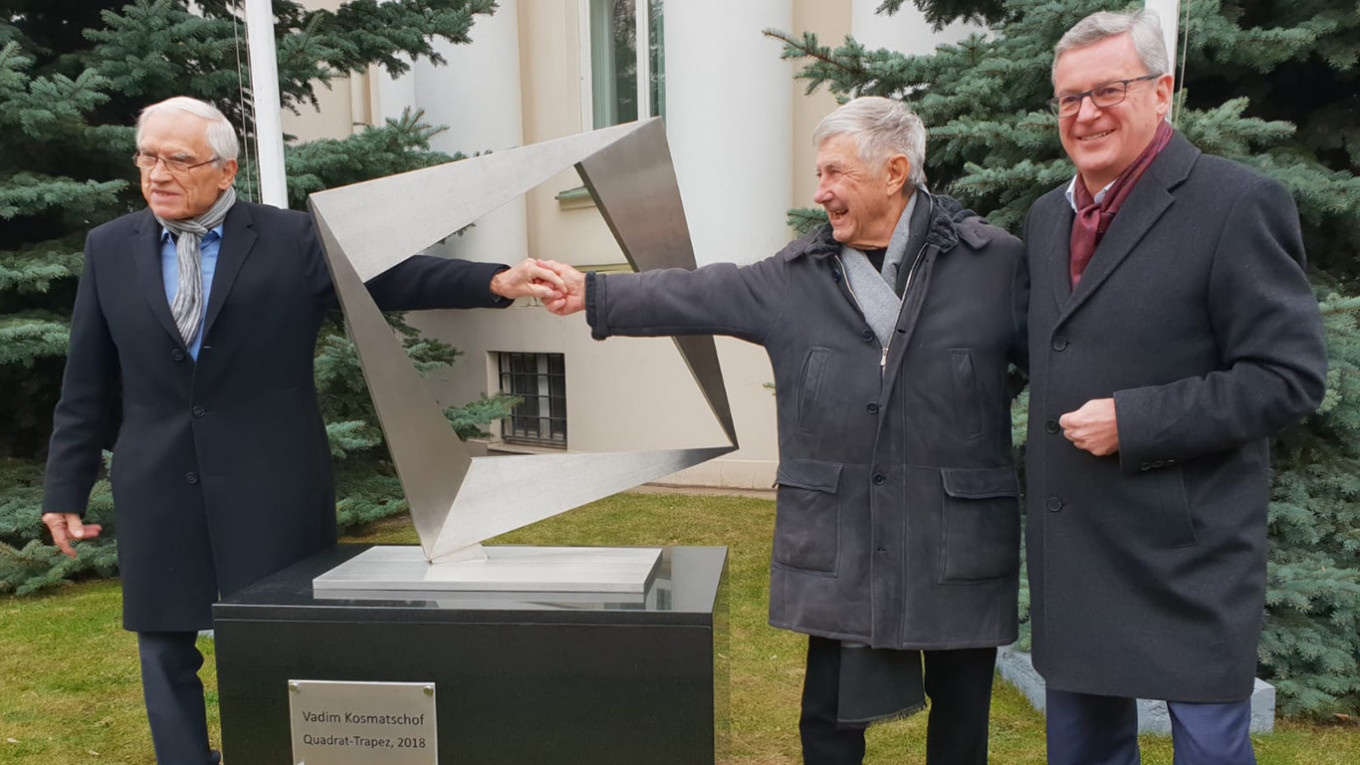
On Nov. 19, a small sculpture was unveiled on a tiny patch of courtyard on one of Moscow’s narrow little side streets before a handful of people — a deceptively modest ceremony to mark a momentous event.
The sculpture was created by Vadim Kosmatschof and placed in front of the Austrian Embassy. It was the first outdoor sculpture of this celebrated artist in Moscow.
Kosmatschof was one of the Soviet Union’s non-conformist artists: a sculptor who made abstract, geometrical structures. Although in the waning “thaw” period several of his works were put up — most notably an enormous sculpture in front of the National Library in Ashgabat, Turkmenistan — commissions began to dry up in the 1970s. In 1979 he and his wife, the artist Yelena Koneva, and their daughter, were given permission to emigrate, and they left for Europe and eventually settled in Austria, where he has a house-studio-sculpture garden not far from Vienna.
After a difficult period of adjustment, Kosmatschof began to win competitions and gain commissions, and by the 1980s and 90s he was one of Europe’s most celebrated and in-demand sculptors, one of the few artists who could conceive and build abstract sculptures for enormous urban spaces. But in the Soviet Union, he was officially forgotten, considered to be a political émigré who had betrayed his homeland.
After the dissolution of the Soviet Union, it took several years before the Russian art community began to direct their attention to Kosmatschof’s works, perhaps simply because the new private art galleries and collectors were not immediately interested in his large-scale sculptures. It wasn’t until 2018 that the Tretyakov Gallery mounted the first retrospective of his work in Russia.
It was fitting, Austrian Ambassador Dr. Johannes Eigner told the audience on Tuesday, that this Russian-Austrian’s work found its “rightful place” at the Austrian Embassy, a part of the country that Kosmatschof and his family consider their second homeland. It was unveiled by Kosmatschof, Eigner and Johann Marte, the legendary Austrian cultural attache who in the 1970s defied Soviet rules to visit, photograph and film non-conformist artists. The three men pulled off the cloth to reveal a burnished steel “Square-Trapezium,” standing on a pedestal like a portal through which we can catch a glimpse of the years, people and places that helped to shape this formidable artist.
The sculpture can be seen at the corner of Starokonyushenny Pereulok and Prechistinsky Pereulok.






